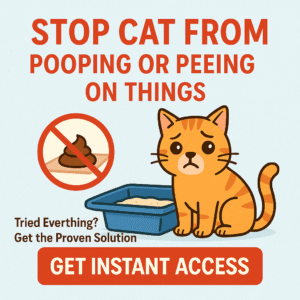Worried that your feline friend might be developing an infection after a tooth extraction? You’re right to pay attention—recognizing the warning signs early can make all the difference. This comprehensive guide walks you through the infection stages, what to monitor, safe home care, and when to call the vet. Plus, discover how Cat Spray No More supports recovery routines and keeps your cat healthy for the long haul.
Introduction
Tooth extractions in cats—whether due to dental disease, resorption, or injury—carry infection risks. While most recover well, some may develop complications like swelling, discharge, or even systemic illness. This 1,400+ word guide equips you with detailed recovery timelines, symptom identification, care strategies, and escalation steps—all supported by tracking forms and comfort plans in Cat Spray No More.
1. Normal Recovery vs. Infection Warning
Expect some swelling, tenderness, and a bit of bleeding for the first 24–48 hours. Mild drooling and decreased appetite are also common. But infections bring more serious signs:
- Persistent or worsening swelling past 48 hours
- Redness around the extraction site that spreads
- Fever, lethargy, appetite loss
- Pus or foul-smelling discharge from mouth or nose
- Difficulty breathing, nasal discharge, or visible swelling under the eye
2. Common Signs of Post-Extraction Infection
Vet experts list key red-flag symptoms :contentReference[oaicite:0]{index=0}:
- Foul odor from the mouth even after sutures dissolve or site drains
- Excessive swelling around jaw or under eye, sometimes pushing the eye outward :contentReference[oaicite:1]{index=1}
- Nasal or oral discharge, especially with swelling or odor :contentReference[oaicite:2]{index=2}
- Drooling, pawing at face, rubbing cheeks—signs of discomfort :contentReference[oaicite:3]{index=3}
- Fever, lethargy, refusal to eat despite offering soft foods :contentReference[oaicite:4]{index=4}
- Persistent bleeding, pus, or redness beyond usual recovery :contentReference[oaicite:5]{index=5}
3. Timeline: When Is Concern Warranted?
| Recovery Phase | Normal | Watch For… | Action |
|---|---|---|---|
| Days 1–2 | Mild swelling, slight bleeding | Excessive bleeding, swelling, refusal to eat | Call vet immediately |
| Days 3–5 | Reducing swelling, beginning to eat | Foul odor, pus, fever, nasal discharge | Urgent vet visit |
| Days 6–10 | Site closing, return to normal | Persistent discharge, worsening lethargy, pain | Vet check—possible infection |
4. Safe Home Care While Recovering
- Soft meals only: Offer pâté or moistened kibble :contentReference[oaicite:6]{index=6}
- Pain control: Follow vet-prescribed meds exactly :contentReference[oaicite:7]{index=7}; ensure nighttime and scheduled doses tracked
- Calm, clean environment: Soft bedding, no jumping or play; litter box close by and fresh :contentReference[oaicite:8]{index=8}
- Oral monitoring: Gently inspect the area for swelling, odor, discharge; rinse with vet-approved saline if instructed
- Pain and behavior logs: Note if your cat loses appetite, hides, or shows facial discomfort. Templates in Cat Spray No More.
- Hydration support: Fresh water, fountains, or broth-mixed food to maintain intake
5. When to Call the Vet—No Hesitation
If you notice any of the following, you should seek veterinary care immediately:
- Swelling and redness that worsens after 48 hours
- Pus or bad-smelling discharge from mouth or nose
- Drooling, pawing at mouth, or signs of facial pain
- Fever, lethargy, or total refusal to eat/drink
- Persistent bleeding beyond 24–48 hours
- Changes in breathing, nasal congestion, or eye swelling
Your vet may recommend antibiotics, analgesics, drainage, or even a follow-up sedation to inspect or flush the site.
6. Vet-Level Treatment Options
Based on infection symptoms, vets may:
- Prescribe antibiotics (common preventative or treat-infection protocols)
- Flush the extraction site under sedation
- Prescribe anti-inflammatories and pain meds
- Perform diagnostics (blood work, x-rays, ultrasound) if infection may be systemic
7. Tracking & Recovery Tools in Cat Spray No More
This ebook isn’t just spray advice—it’s a recovery partner:
- Daily symptom logs: Monitor pain, swelling, food intake, medication schedules
- Red flag alerts: Prompts you to contact vet at first sign of infection
- Care reminders: Timely pain med, meals, oral checks, and fluid intake
- Stress-free environment tips: Design quiet recovery areas and reinforce positive routines
8. Long-Term Prevention & Oral Health Care
- Home dental care: Brushing routines, dental treats, and water additives to prevent future disease :contentReference[oaicite:9]{index=9}
- Regular veterinary cleanings: At least yearly for adult cats
- Diet support: Nutrients, antioxidants, moisture to support gum and healing health
- Monitor signs: Halitosis, drooling, pawing at mouth between dental exams
9. Cat Owner Experience
“After extraction, my cat had swelling under the eye and a terrible mouth smell. We used the ebook’s care logs to track meds and food. Within two days we saw vet and got antibiotics—he healed fast, and the tracking helped us stay ahead.”
Conclusion
Infections after cat tooth extractions can escalate quickly—but you can catch them early. Watch for prolonged swelling, discharge, odor, fever, or appetite loss. Provide calm, consistent care with soft meals, pain meds, hydration, and oral checks. And don’t hesitate—when in doubt, call your vet.
Get peace of mind and deeper support: download Cat Spray No More now. You get recovery trackers, care routine checklists, stress-free environment guides, and early-warning prompts designed for recovery success. Equip yourself and your cat with the best tools for healing—and prevention that lasts.
